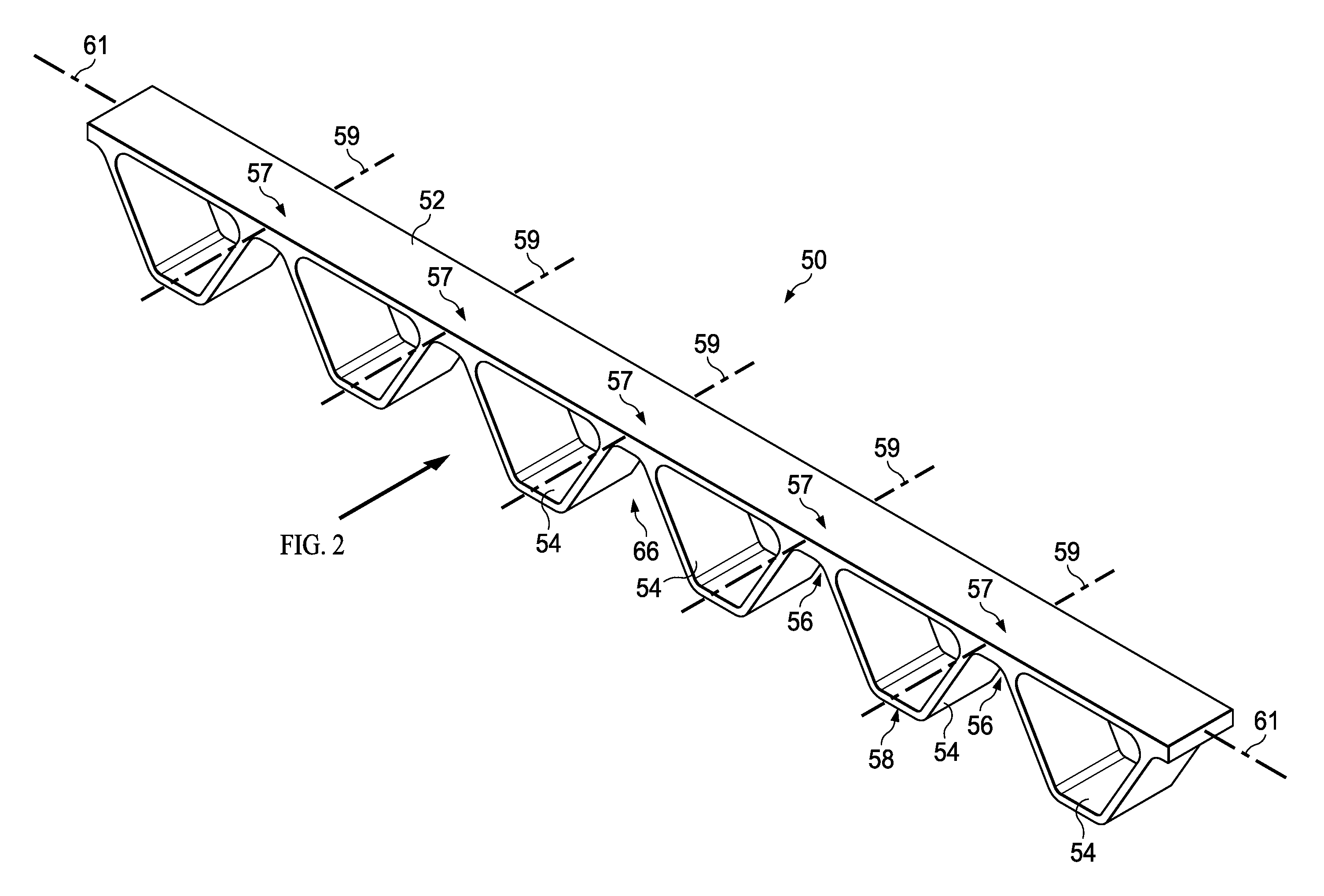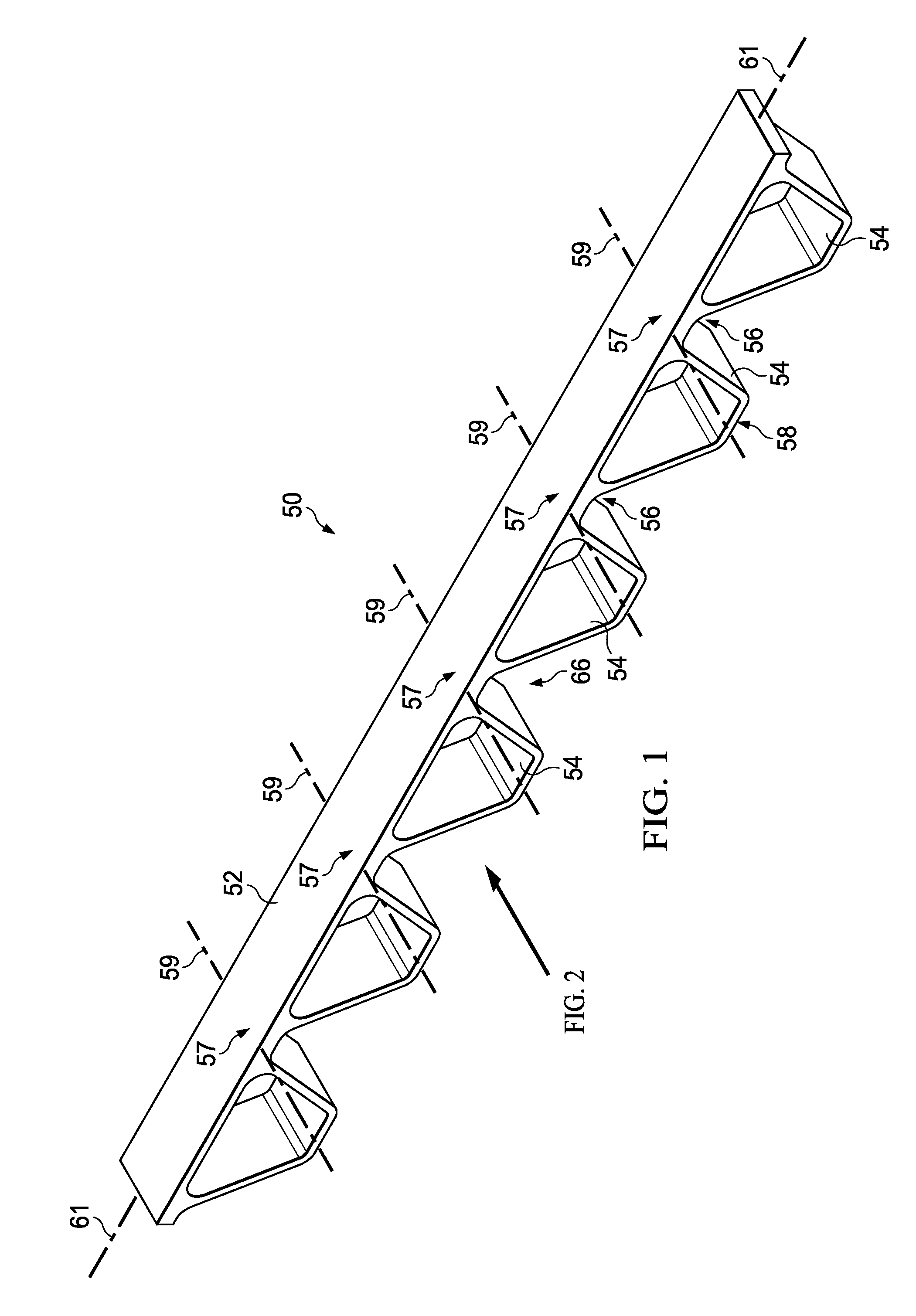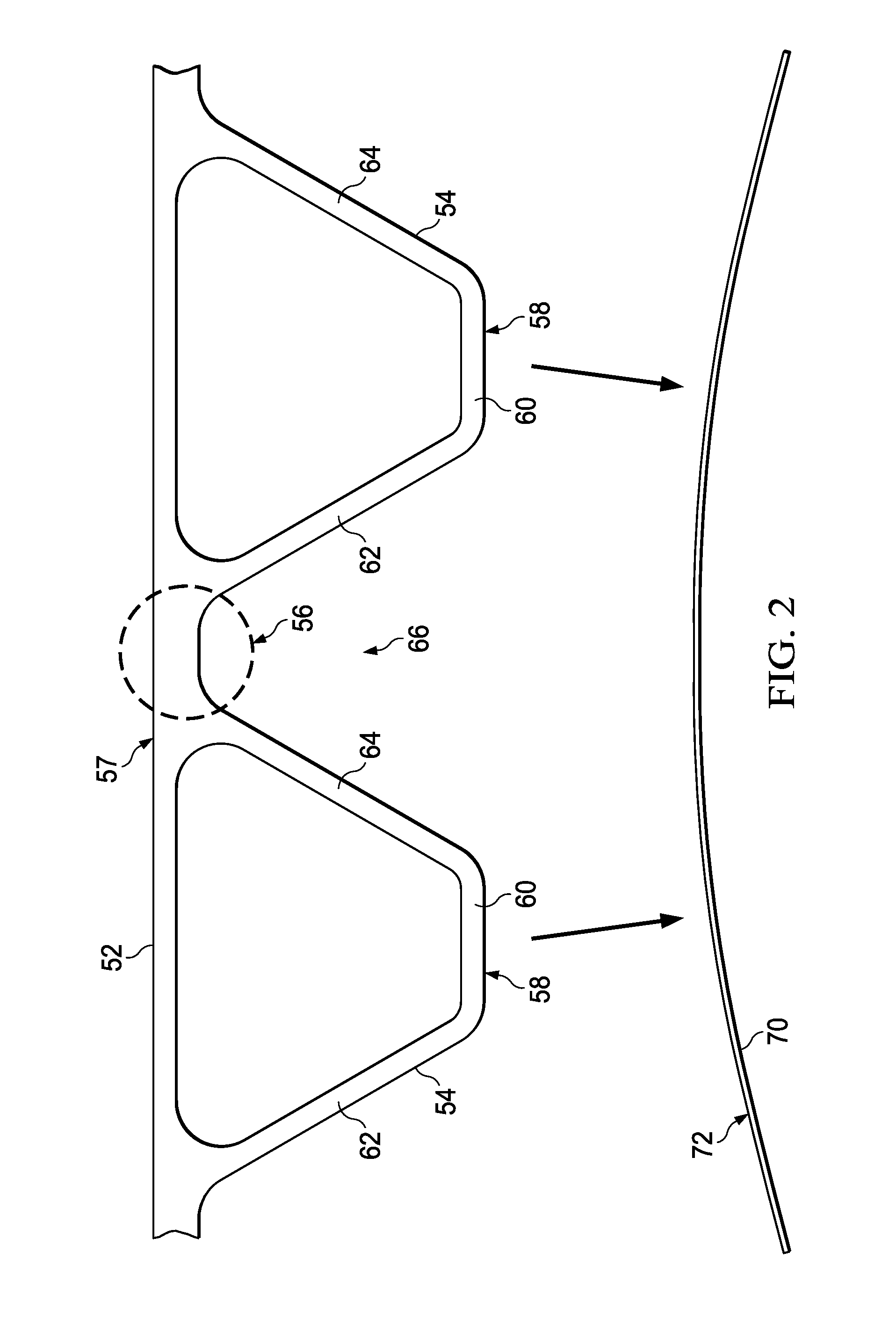Flexible Truss Frame and Method of Making the Same
a truss frame and flexible technology, applied in the field of composite structures, can solve the problems of increasing the cost and complexity of some applications, affecting joint strength, stiffness and/or durability, time-consuming shimming, etc., to reduce the number of unique parts and associated recurring and non-recurring costs, reduce stress concentration, and reduce the effect of total part coun
- Summary
- Abstract
- Description
- Claims
- Application Information
AI Technical Summary
Benefits of technology
Problems solved by technology
Method used
Image
Examples
Embodiment Construction
[0041]Referring first to FIGS. 1 and 2, the disclosed embodiments relate to a flexible truss frame 50 suitable for use in primary and secondary structures, such as the skin 70 covering an airframe (FIG. 8). As will be discussed below in more detail, the frame 50 may be formed of composite materials and is flexible along its length during the installation process so as to conform to local contours of the surface 72 of the skin 70. The flexibility of the frame 50 allows it to be manufactured as a common part that fits-up to differing contours of the skin surface 72. Although the frame 50 is flexible under typical assembly forces to conform to local contours of the skin surface 72, the frame 50 provides the required stiffness and rigidity after it is attached to the skin 70. It should be noted here that while an airframe skin 70 has been disclosed for illustrative purposes, the flexible frame 50 may be employed to stiffen a wide range of other primary and secondary structures used in a...
PUM
| Property | Measurement | Unit |
|---|---|---|
| flexible | aaaaa | aaaaa |
| rigidity | aaaaa | aaaaa |
| length | aaaaa | aaaaa |
Abstract
Description
Claims
Application Information
 Login to View More
Login to View More - R&D
- Intellectual Property
- Life Sciences
- Materials
- Tech Scout
- Unparalleled Data Quality
- Higher Quality Content
- 60% Fewer Hallucinations
Browse by: Latest US Patents, China's latest patents, Technical Efficacy Thesaurus, Application Domain, Technology Topic, Popular Technical Reports.
© 2025 PatSnap. All rights reserved.Legal|Privacy policy|Modern Slavery Act Transparency Statement|Sitemap|About US| Contact US: help@patsnap.com



